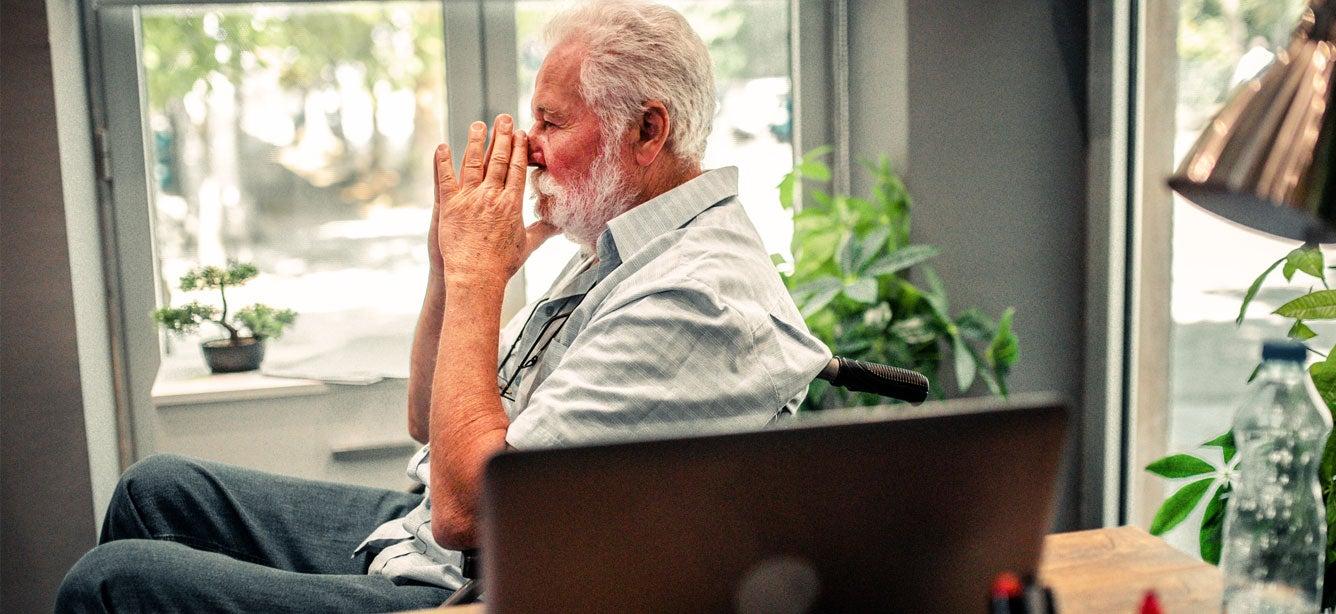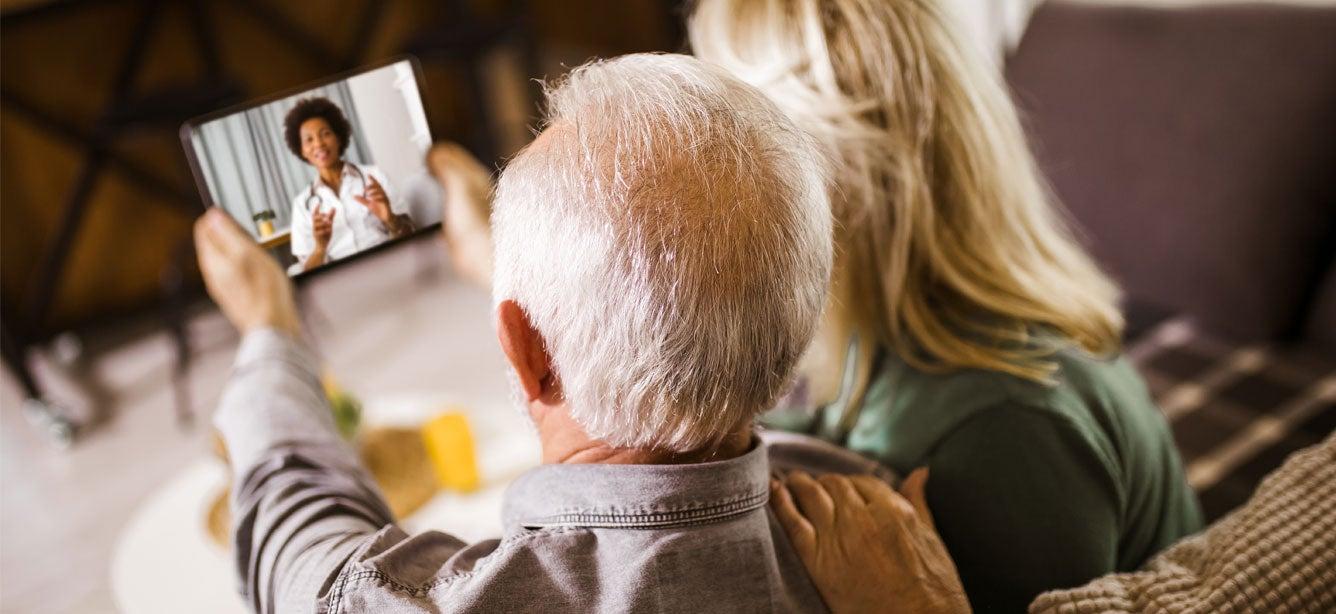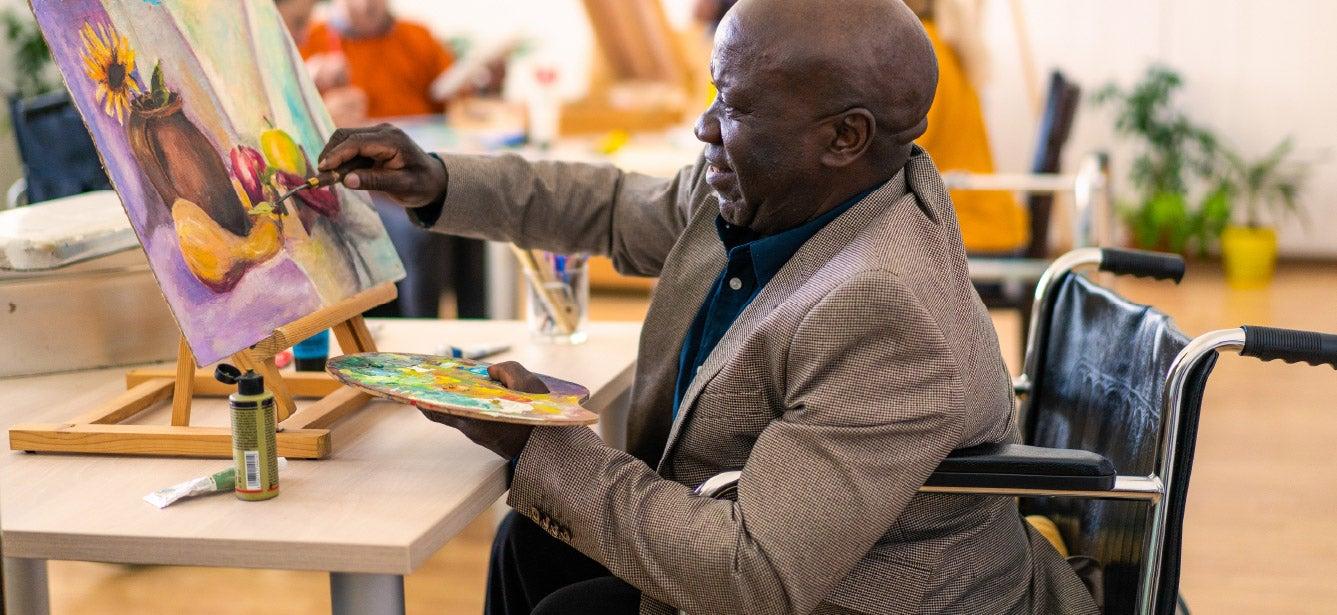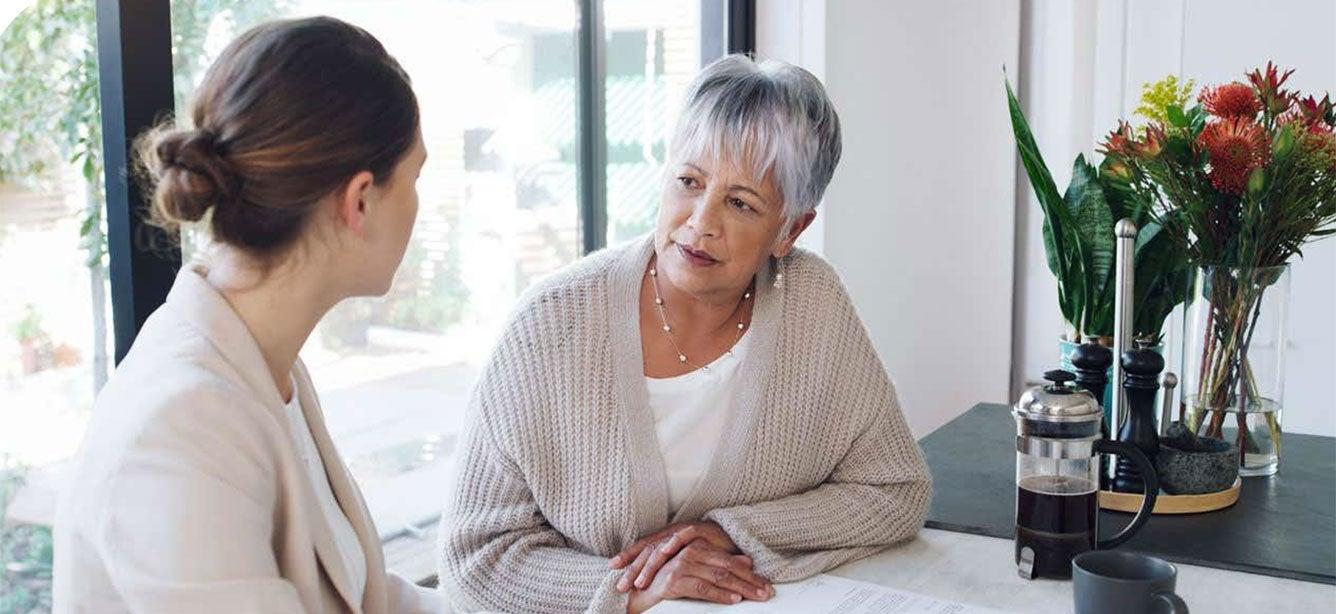
Related Topics
The 988 Suicide & Crisis Lifeline is proving to be just that: a lifeline to millions who have connected to crisis counselors via phone calls, texts, and online chats.
"We know that 988 is saving lives and helping millions of people," U.S. Health and Human Services Director Xavier Becerra said in a July 2024 news release. "I hope anyone who feels alone, or that they are without options, knows that 988 is there to help.”
How common is suicide in the United States?
Suicide is a leading cause of death in the United States, claiming the lives of 49,449 Americans in 2022—a 3% increase from 2021. Among these deaths, 10,433 were attributed to people age 65 and up.1 Consider these other facts related to suicide and older adults:
- From 2021 to 2022, there were significant increases in suicides among adults age 55 to 64 and 75 and older. The rate of suicides among people age 75+ was the highest across all age groups.2
- Suicide attempts by older adults are far more likely to be successful compared to younger populations. Roughly one in four older adults complete a suicide attempt compared to one in 200 youths.3
- Overall, men age 75 and older have the highest rate of suicide.1
According to the Centers for Disease Control and Prevention (CDC), other groups with higher-than-average suicide rates include veterans, people in certain occupations (e.g., mining), and those who live in rural areas. With respect to ethnicity, age-adjusted suicide rates are highest among non-Hispanic American Indian people, Alaska Native people, and non-Hispanic White people. Nearly half of people who die by suicide had a diagnosable mental health condition.
Despite these jarring numbers, suicide is not an inevitable outcome for anyone. Providing immediate and direct aid to people in their most desperate hour can help them overcome their struggles, find hope, and heal. This is the goal of the 988 Suicide & Crisis Lifeline, which was highlighted in a breakout session during our Older Adults Mental Health Awareness Day (OAMHAD) Symposium called "Suicide Prevention — Updates on 988.”
What is 988 and how can it help older adults?
Funded by the Substance Abuse and Mental Health Services Administration (SAMHSA), the Suicide & Crisis Lifeline is part of the Biden administration's commitment to addressing the national mental health crisis. In 2022, the National Suicide Prevention Lifeline phone number was transitioned from its 10-digit form to a three-digit, easy-to-remember dialing and texting code.
HHS said 988 counselors answered more than 10 million calls, texts, and online chats in the first year.
Through skilled, person-centered support, the 988 Lifeline currently helps thousands of Americans move past crisis situations each day. This service is available to anyone experiencing a mental health-related emergency, whether it’s severe emotional distress, a substance use crisis, or thoughts of suicide or self-harm. People can also dial 988 if they’re worried about the safety and well-being of someone else. Users of 988 can reside in any U.S. state but must have access to telephone, cellular, or internet services.
The Suicide & Crisis Lifeline is part of a bolder, longer-term vision of a robust and nationwide crisis care infrastructure.
"What we want to do is provide crisis care rooted in best practices for all communities. Suicide affects everybody across this country. We really want to make sure that our counselors are prepared to serve people and meet them where they're at," said OAMHAD presenter Tia Dole, PhD, Chief 988 Suicide & Crisis Lifeline Officer at Vibrant Emotional Health, which administers 988.
What happens when someone calls 988?
People who call or send a text message to 988 are put in touch with a trained counselor who lends a compassionate listening ear, without bias or judgment. Lifeline counselors are largely volunteers. They are experienced in talking to people about a range of issues, from economic worries and physical illness to relationships and abuse. Counselors not only provide immediate emotional support; they often refer callers to services and resources that can deliver ongoing mental health care. Studies have shown that after talking to a Lifeline counselor, people often feel less depressed and more hopeful about their situation. It’s important to note that while law enforcement may be called in if a distressed caller is determined to be in immediate danger, this is a last resort and a rare occurence.
Operating from more than 200 call centers nationwide, the Lifeline is available 24 hours a day, 7 days a week. In addition to phone and text, callers can talk to a counselor via live chat by visiting the Suicide & Crisis Lifeline website.
The E4 Center has created short, easy-to-follow online modules for call center staff to have on hand when responding to older adults. These six modules include the topics of Ageism, Anxiety and Depression, Cognition, Older Adult Life & Health, Substance Use, and Suicide. Fact sheets are also available that summarize the modules and provide a quick reference when a staff member is interacting with a caller. These resources can be accessed online for anyone who wishes to use them.
What kind of training do 988 counselors have in working with older adults?
Each 988 crisis center develops its own specific training to meet the needs of its organization. Call center staff must be prepared to understand and accommodate the needs of older adult callers. To meet this demand, the E4 Center of Excellence for Behavioral Health Disparities in Aging was asked to create training for the 988 Lifeline and other crisis centers to raise awareness about the unique issues older adults face.
“Our mission is to engage, empower, and educate health care providers and community-based organizations for equity in behavioral health for older adults and their families across the U.S.,” said OAMHAD presenter Erin Emery-Tiburcio, PhD, Co-Director of the E4 Center. “We focus on depression and suicide, substance use disorders, and serious mental illness, and where those issues overlap to either exacerbate or create physical health issues. We are also working to educate providers to meet the needs of the most vulnerable older adults in our community."
Will 988 and 911 work together?
SAMHSA is working with state and local agencies to create seamless coordination between the 988 and 911 systems. This will facilitate referrals of high-risk callers in crisis who may need additional interventions.
Does 988 serve veterans in emotional crisis, too?
Yes. The existing Veterans Crisis Line, which has counselors who specialize in supporting veterans, service members, and their families, will still be available. Callers should dial 988 and then press "1" to reach the Veterans Crisis Line or dial 1-800-273-8255 and press "1." If texting is preferred, they can text 838255 to reach the Veterans Crisis Line directly. Callers do not have to be receiving VA benefits or health care to call the crisis line.
How will 988 reach all communities?
Providing access to crisis care is at the core of 988. Its voice call, text, and chat services are offered in English and Spanish. Interpretation services are also available in 240+ languages and dialects for the voice call option.Efforts to improve cultural competency training for Lifeline counselors are ongoing. These include providing them with tools to improve their interaction with Spanish-language, deaf and hard-of-hearing, and other diverse populations.
OAMHAD presenter Pata Suyemoto, Training Director for the National Asian American Mental Health Association (NAAPIMHA), stressed the need for language diversity and cultural relevance in delivering crisis services. "In general, suicide prevention efforts have not been developed for people of color or other marginalized communities," she said. "We need to have robust resources for all communities."
As part of funding requirements for the 988 Lifeline, states and territories are mandated to:
- Examine strategies for reaching groups with an elevated risk of suicide, many of whom are historically marginalized.
- Develop plans to measure their success in improving access to services across different populations.
- Coordinate with tribal nations to ensure appropriate support for tribal calls to 988 while still recognizing tribal nation sovereignty.
The need for a more comprehensive approach to suicide prevention
The grief, fear, and isolation of the COVID-19 pandemic have amplified America’s struggles with mental health. During 2020, 1 in 5 adults experienced mental illness. Many people also reported increased use of alcohol and other substances to deal with stress.4 These issues highlight the need to not only to expand access to mental health services, but also access to crisis response for people in acute psychological distress.
With America’s mental illness burden growing, stronger suicide prevention efforts can’t wait. Beyond the tragic loss of a life, suicide can have a devastating and enduring impact on families and communities. Surviving family members and friends may struggle with overwhelming grief, guilt, depression, and anxiety. Even when a suicide attempt is unsuccessful, a person may experience long-term mental and physical health effects. Suicide and self-harm also exact a grueling financial toll: One study found that estimated national costs of self-injury mortality rose by 143% from $0.46 trillion to $1.12 trillion from 1999 to 2019.5
The positive news is that with a comprehensive and well-coordinated public health approach, we can save lives while shaping emotionally healthy and resilient individuals, families, and communities. Promoting the 988 Suicide & Crisis Lifeline to older adult populations is a powerful starting point.
To learn more about 988 and suicide in older adults:
- Visit the SAMHSA website.
- Explore the 988 Partner Toolkit, which provides a wealth of resources that can be implemented in local suicide prevention efforts.
- Watch the replay of “Suicide Prevention — Updates on 988,” a live session held during NCOA’s 2023 Older Adult Mental Health Awareness Day Symposium.
Note: The old Lifeline phone number (1-800-273-8255) will continue to be available to people in emotional distress, even with the national launch of 988.
Sources
1. Centers for Disease Control and Prevention (CDC). Suicide Data and Statistics. Found on the internet at https://www.cdc.gov/suicide/facts/data.html?CDC_AAref_Val=https://www.cdc.gov/suicide/suicide-data-statistics.html
2. Sally C. Curtain, M.A., et al. Provisional Estimates of Suicide by Demographic Characteristics: 2022. Centers for Disease Control and Prevention, National Center for Health Statistics. November 2023. Found on the internet at https://www.cdc.gov/nchs/data/vsrr/vsrr034.pdf
3. Cleveland Clinic. What to Know About Older Adults and Suicide Risk. April 4, 2023. Found on the internet at https://health.clevelandclinic.org/suicide-in-older-adults
4. National Alliance on Mental Illness. 2020 Health by the Numbers. Found on the internet at https://www.nami.org/NAMI/media/NAMI-Media/Infographics/NAMI_2020MH_ByTheNumbers_Adults-r.pdf
WVU Today. WVU researchers estimate cost of ‘injury deaths of despair,’ including suicide, exceeds $1 trillion annually in the U.S. February 9, 2023. Found on the internet at https://wvutoday.wvu.edu/stories/2023/02/09/wvu-researchers-estimate-cost-of-injury-deaths-of-despair-including-suicide-exceeds-1-trillion-annually-in-the-u-s



